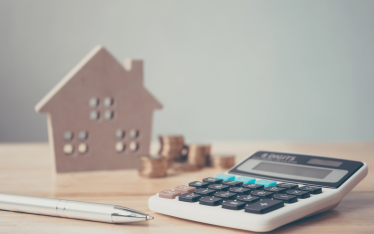Owning your own home is the great Australian dream. It is a place you can truly call yours and create your own piece of paradise –paint the walls any colour you want and hang pictures on every wall – but you must start saving now.
Most people will tell you to just cut costs, eat vegemite sandwiches for a year, however I believe there are multiple ways to save money while still enjoying your life and making this dream a reality to ensure your saving habits continue after you purchase your home.
The first step is to set yourselves a savings goal. You need to visualise your dream daily and work towards it. If you have a partner, make sure you are both on the same page, you have the same goals and you have a happy relationship. Happiness plays a big role in reaching goals and dreams, it provides motivation and helps you make smarter decisions when it comes to spending money.
Determine the price of the home you want
We need to start with the basics, where do you want to live, what type of property do you want and what will this cost you. Many of us may find that we need to either sacrifice the size or quality of our first home for location, or we may sacrifice location for a better and bigger house. Some may make the decision to not sacrifice either and their savings journey will just take a little longer. Remember, there is no wrong decision, this is your dream.
For example – if you decide you want to purchase a home for $500,000 you need to remember you will need additional funds for purchase costs (transfers and legal fees) and these would usually equate to 4.00% to 5.00% of the purchase. For this example let’s assume your purchase costs are $4,000 therefore your true purchase price is $504,000.
We all hear about savings a 20% deposit to save on Lenders Mortgage Insurance, however this would equate to needing to save $104,000. This number can seem impossible and scary. What if I told you, by showing banks a history of good savings habits, you need to only save 10%, $54,000 (now that is not as scary) this would cost you approximately $7,700 in Lenders Mortgage Insurance (LMI) (approximately $14,700 over 30 years for LMI and interest costs associated assuming principal and interest repayments).
Please note, this example does not include any government grants that are available to some first time home buyers. See http://www.sro.vic.gov.au/first-home-owner for current and future government grants.
| 10% Deposit | 20% Deposit | |
| Purchase Price | $500,000 | $500,000 |
| + Purchase Costs (transfer & legal fees) | $4,000 | $4,000 |
| + LMI (approx. to be added onto the loan amount) | $7,715 | $0 |
| Total Purchase Cost | $511,715 | $504,000 |
| Bank Loan | $457,715 | $400,000 |
| SAVINGS Required to Purchase | $54,000 | $104,000 |
Use our How Much Can I Borrow Calculator to determine your borrowing capacity based on your current income and expenses.
Review your spending & create a budget
Creating a budget is creating a plan for your money. It is important to have a visual impact of your cashflow – what you earn and where you spend that money. using the CashMaster Software makes this easy – you can allocate and categorise all your spending, while also creating savings goals with the ability to see how you are progressing and when you are expected to achieve the saving goals.
Once you have established a budget and have an understanding of where you have been spending your money, you will put yourself in the drivers seat of your future. You can find money savings without sacrificing quality of life. Again, you do not have to eat vegemite sandwiches daily but you may find you will reduce eating out once a week to save yourself an extra $50 a week to go toward your savings. Alternatively you may reduce your gym membership to a cheaper gym. This will also force you to look at other debts and ensure you work on repaying them while you save.
If want to accelerate your savings, you may reduce the cost of your rent by moving into a cheaper residence to allow you to save faster. This will be a short-term sacrifice for long term gains. Think Big Money can help you create a budget and provide you with some tips on how and where you can find savings.
Possible areas to save:
- Bring lunch to work for a month (saving = $200)
- Skip alcohol for a month (saving = $150)
- Skip takeaway coffee for a month (saving = $70)
You should also consider selling your unwanted items. If you have a look around your home you will find there are probably several items that you no longer use – furniture, clothes, exercise equipment etc – why not consider selling them on ebay, or a facebook market place. Every dollar you earn is a dollar saved toward your first home.
Remember, a budget is a plan for your money, but remember you need to be happy with your lifestyle, therefore eliminating all luxuries is not ideal or realistic. Choose a few luxuries to eliminate to get ahead. Remember, saving money doesn’t mean you have to eliminate spending money on everything that makes you enjoy your lifestyle.
Manage your existing debts and take control
You may feel like you are already drowning in debt and the thought of long term savings may feel like an impossible task. Consolidating your existing debts to a single lower interest debt solution will make it easier to not only manage your repayments but create a favourable scenario to the bank. It is favourable from a banks perspective to see fewer debts when its come time to do your home loan application.
Start Saving – pay yourself first
Once you know how much you need to save, its time to start saving. The best way to stick to your savings goal is to pay yourself first. Treat your home savings the same way you treat making payments on your fixed bills. Once you receive your pay check – allocate your savings to a separate account immediately. The ideology of saving what’s left at the end of the month does not work for most Australians. We need to ensure that savings are a focus, because you will find at the end of the month, savings are just not there.
Setting up an automatic nominated amount into your separate savings account can help achieve your saving goals. The chances are if you don’t see the money, you won’t miss it.
Before you take the plunge, contact us at Think Big Money for some tips or a referral to a Financial Advisor or Mortgage Broker so we can work together to hold you accountable and help you get that first home.









